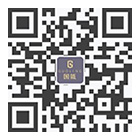Interpretations of the Supreme People's Court and the Supreme People's Procuratorate on Several Issues concerning the Specific Application of Law in Handling Criminal Cases of Infringement of Intellectual Property Rights (3)
The Interpretation of the Supreme People's Court and the Supreme People's Procuratorate on Several Issues concerning the Specific Application of Law in Handling Criminal Cases of Infringement of Intellectual Property Rights (III), which was adopted at the 1811th meeting of the Judicial Committee of the Supreme People's Court on August 31, 2020 and at the 48th meeting of the 13th Procuratorial Committee of the Supreme People's Procuratorate on August 21, 2020, is hereby promulgated. Effective from September 14, 2020.
Supreme People's Court and Supreme People's Procuratorate
Interpretation of Several Issues concerning the Specific Application of Law in Handling Criminal Cases of Intellectual Property Infringement (3)
In order to punish crimes of infringement of intellectual property rights according to law and maintain the order of the socialist market economy, in accordance with the Criminal Law of the People's Republic of China, the Criminal Procedure Law of the People's Republic of China and other relevant provisions, several issues concerning the specific application of law in handling criminal cases of infringement of intellectual property rights are hereby explained as follows:
Article one
Under any of the following circumstances, it may be identified as "a trademark identical with its registered trademark" as provided for in Article 213 of the Criminal Law:
(1) changing the font, letter case or horizontal and vertical arrangement of text of the registered trademark, which is basically no different from the registered trademark;
(2) changing the spacing between the words, letters, numbers, etc. of the registered trademark, which is basically no different from that of the registered trademark;
(3) changing the color of the registered trademark does not affect the embodiment of the distinctive features of the registered trademark;
(4) the addition of only the generic name and model number of the goods to the registered trademark lacks significant characteristic elements, and does not affect the embodiment of the significant characteristics of the registered trademark;
(5) there is basically no difference between the three-dimensional mark and the planar elements of the three-dimensional registered trademark;
(6) other trademarks that are basically indistinguishable from registered trademarks and are sufficient to mislead the public.
Article 2
A natural person, legal person or organization without legal personality who has signed his name in the usual manner on a work or sound recording provided for in Article 217 of the Criminal Law shall be presumed to be the copyright owner or producer of a sound recording, and the corresponding rights exist in the work or sound recording, unless there is proof to the contrary.
In cases involving numerous types of works and sound recordings and scattered rights holders, where there is evidence to prove that the copied strains involved are illegally published or reproduced and distributed, and the publisher or publisher cannot provide relevant evidential materials that obtain permission from the copyright owner or producer of sound recordings, It can be identified as "without the permission of the copyright owner" or "without the permission of the producer of the sound recording" as stipulated in Article 217 of the Criminal Law. However, there is evidence to prove that the right holder has abandoned the right, the copyright of the work involved in the case or the relevant rights of the sound recording are not protected by the copyright law of our country, except that the term of right protection has expired.
Article 3
Those who steal trade secrets by means of illegal copying, unauthorized or unauthorized use of computer information systems shall be identified as "theft" as provided for in the first paragraph of Article 219 of the Criminal Law.
Obtaining the business secrets of the right holder by bribery, fraud, electronic intrusion, etc., shall be identified as "other improper means" as provided for in the first paragraph of Article 219 of the Criminal Law.
Article 4
If the act prescribed in Article 219 of the Criminal Law is carried out under any of the following circumstances, it shall be deemed as "causing heavy losses to the right holder of the trade secret" :
(1) the amount of losses caused to the right holder of the trade secret or the amount of illegal gains from infringing the trade secret is more than 300,000 yuan;
(2) directly causing the bankruptcy or bankruptcy of the right holder of the trade secret due to major business difficulties;
(3) causing other heavy losses to the right holder of the trade secret.
If the amount of losses caused to the right holder of the trade secret or the amount of illegal gains from the infringement of the trade secret is more than 2.5 million yuan, it shall be identified as "causing particularly serious consequences" as provided for in Article 219 of the Criminal Law.
Article 5
The amount of losses or unlawful gains caused by the acts prescribed in Article 219 of the Criminal Law may be determined in the following ways:
(1) Where the trade secret of the right holder is obtained by improper means and has not been disclosed, used or allowed to be used by others, the amount of loss may be determined on the basis of the reasonable license royalty of the trade secret;
(2) Where, after obtaining the trade secret of the right holder by improper means, he discloses, uses or allows others to use it, the amount of loss may be determined according to the loss of sales profits caused by the right holder as a result of the infringement, but if the amount of loss is lower than the reasonable license royalty of the trade secret, the amount of loss shall be determined according to the reasonable license royalty;
(3) Where, in violation of the agreement or the right holder's requirements for keeping the trade secret, he discloses, uses or allows others to use the trade secret he has mastered, the amount of loss may be determined according to the loss of sales profits caused by the right holder because of the infringement;
(4) Where a trade secret is obtained by improper means or disclosed in violation of an agreement or the right holder's requirements for the disclosure, use or permission to use the trade secret, the amount of loss may be determined according to the loss of sales profits caused by the right holder as a result of the infringement;
(5) Where the trade secret has become known to the public or is lost due to the violation of the trade secret, the amount of loss may be determined according to the commercial value of the trade secret. The commercial value of a trade secret may be determined comprehensively on the basis of the cost of researching and developing the trade secret and the income from implementing the trade secret.
(6) Property or other property interests obtained by disclosing or allowing others to use trade secrets shall be identified as illegal gains.
The loss of sales profit of the right holder as provided for in items 2, 3 and 4 of the preceding paragraph may be determined by multiplying the total amount of sales reduction caused by the infringement by the right holder's reasonable profit of each product. If the total amount of reduced sales cannot be determined, it may be determined by multiplying the sales volume of the infringing product by the right holder's reasonable profit per product; If the total amount of reduced sales caused by the infringement and the reasonable profit of each product cannot be determined, it may be determined by multiplying the sales volume of the infringing product by the reasonable profit of each infringing product. If the trade secret is used for other business activities such as services, the amount of loss may be determined according to the reasonable profit reduced by the right holder as a result of the infringement.
The remedial costs incurred by the right to trade secrets to alleviate the loss to the business operation or business plan or to restore the security of the computer information system or other systems shall be included in the losses caused to the right holder of the trade secret.
Article 6
In criminal proceedings, where the parties, defenders, agents AD litem or outsiders apply in writing to take confidential measures for evidence and materials related to trade secrets or other business information that needs to be confidential, necessary confidentiality measures shall be taken according to the circumstances of the case, such as organizing the participants in the proceedings to sign confidentiality undertakings.
Those who violate the requirements of the confidentiality measures mentioned in the preceding paragraph or the confidentiality obligations prescribed by laws and regulations shall bear corresponding liabilities according to law. Anyone who discloses, uses or allows others to use trade secrets obtained or contacted in criminal proceedings without authorization, in accordance with the provisions of Article 219 of the Criminal Law, shall be investigated for criminal responsibility according to law.
Article 7
Except in special circumstances, goods that are counterfeit registered trademarks, signs of registered trademarks illegally manufactured, copies of infringing Copyrights, materials and tools mainly used to manufacture goods that are counterfeit registered trademarks, signs of registered trademarks or infringing copies shall be confiscated and destroyed according to law.
If the above articles need to be used as evidence in civil or administrative cases, upon application by the right holder, they may be destroyed after the conclusion of the civil or administrative case or after the evidence is fixed by means of sampling or photographing.
Article VIII
Under any of the following circumstances, a heavier punishment may be imposed as appropriate, and probation is generally not applicable:
(1) engaging primarily in infringement of intellectual property rights;
(2) Infringement of intellectual property rights again after being administratively punished for infringement of intellectual property rights constitutes a crime;
(3) counterfeiting registered trademarks of commodities such as rescue and relief supplies and epidemic prevention materials during major natural disasters, accidents or public health events;
(4) refusing to hand over illegal gains.
The ninth article
Under any of the following circumstances, a lighter punishment may be given as appropriate:
(1) pleading guilty to punishment;
(2) Obtaining the understanding of the right holder;
(3) showing repentance;
(4) failing to disclose, use or allow others to use the business secrets of the right holder after obtaining them by improper means.
Article ten
Where a crime of infringing intellectual property rights is committed, a fine shall be imposed according to law, taking into account the amount of illegal gains from the crime, the amount of illegal business operations, the amount of losses caused to the right holder, the amount of infringing counterfeit goods and the social harm.
The amount of the fine shall generally be not less than one and not more than five times the amount of the illegal gains. If the amount of illegal gains cannot be ascertained, the amount of the fine shall generally be determined on the basis of not less than 50% but not more than double the amount of the illegal business. If the amount of illegal gains and the amount of illegal business operations cannot be ascertained, and if a person is sentenced to fixed-term imprisonment of not more than three years, criminal detention, public surveillance or is simply fined, the amount of the fine shall generally be between 30,000 yuan and 1 million yuan; If a person is sentenced to fixed-term imprisonment of more than three years, the amount of fine shall generally be between 150,000 yuan and 5 million yuan.
Article 11
After the promulgation of this Interpretation, if the previously issued judicial interpretation and normative documents are inconsistent with this Interpretation, this Interpretation shall prevail.
Article 12
This interpretation will come into force on September 14, 2020.







